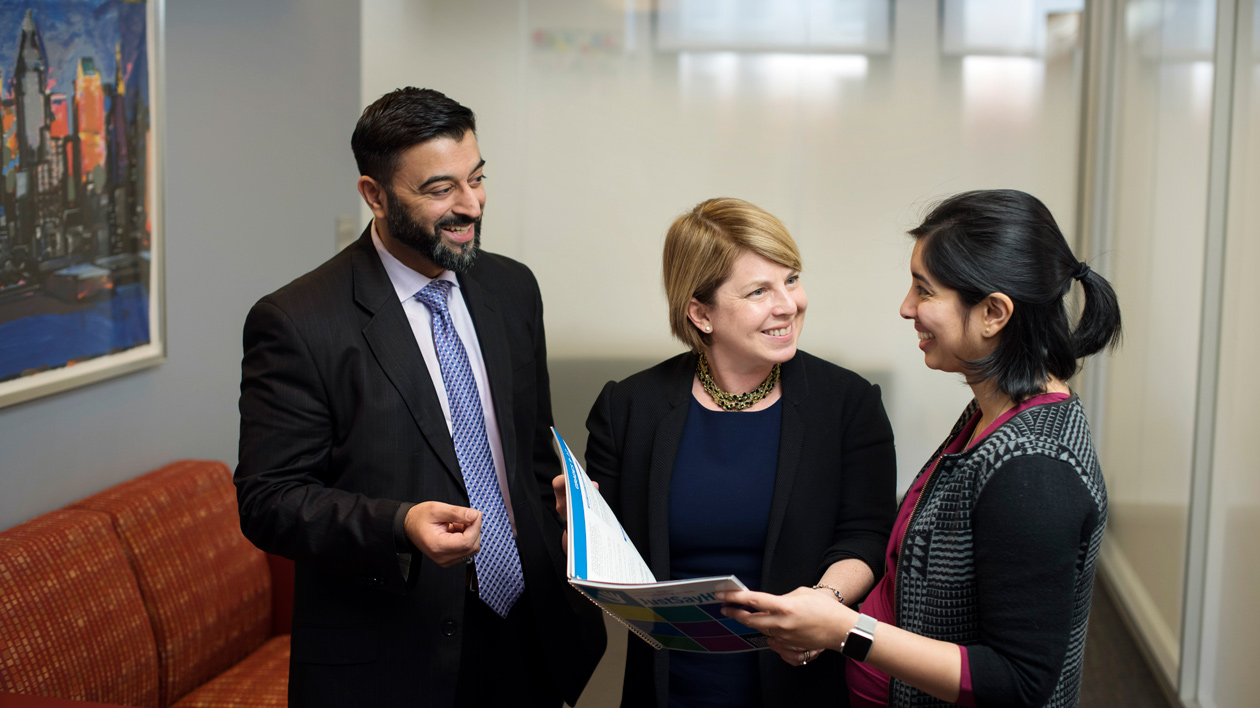Main content
We use cookies and similar tools to give you the best website experience. By using our site, you accept our Websites Privacy Policy.
At the Child Study Center, part of Hassenfeld Children’s Hospital at NYU Langone, specialists diagnose mood disorders based on a comprehensive evaluation, which includes questionnaires and in-person interviews with you and your child, both individually and together.
Your child’s doctor assesses your child’s symptoms, discusses any family history, and evaluates your child’s current functioning. Our specialists may also speak with your child’s teachers, other caregivers, and previous healthcare providers.

A diagnosis of major depressive disorder, or depression, requires that a child experience symptoms daily for at least two weeks.
Symptoms must interfere with the child’s daily life. Five of the following symptoms must be present:
Because depression can often interfere with important developmental skills—such as forming friendships, mastering academic skills, and achieving independence—it’s important that your child receives the correct diagnosis.
Several symptoms of persistent depressive disorder overlap with major depressive disorder, though a child with the former has fewer symptoms that are of lower intensity and longer duration. Children with persistent depressive disorder have a depressed mood for most of the day and for more days than not for at least a year.
Two of the following six symptoms must also be present and disrupt the child’s ability to function at home, school, or with peers: poor appetite or overeating; insomnia or oversleeping; low energy or fatigue; low self-esteem; poor concentration or difficulty making decisions; and feelings of hopelessness.
Symptoms may vary in intensity at times, but they usually do not disappear entirely. If symptoms become more severe, a diagnosis of major depressive disorder may be warranted.
To be diagnosed with bipolar disorder, a child must have one manic episode, which is characterized by an extended period of excitability or irritability, exaggerated self-confidence, or recklessness.
Most but not all children and adolescents with bipolar disorder also have intermittent depressive episodes, in which the child has symptoms of depression, such as irritability, persistent sadness, or frequent crying. Occasionally, children have a “mixed” or “rapid-cycling” version of this condition, so that mania and depression occur together. Whether a child first experiences a depressive episode or a manic episode varies.
A diagnosis of disruptive mood dysregulation disorder requires that symptoms occur in at least two settings—such as at home and at school—for a year or more. During this period, symptoms must continue without relief for longer than three months at a time.
Symptoms include three or more temper outbursts per week that are out of proportion to the situation or trigger and are inconsistent with the child’s developmental level. The mood between tantrums is persistently irritable.
Several symptoms of disruptive mood dysregulation disorder are also present in children and teens with depression, bipolar disorder, and oppositional defiant disorder. Some children with the condition also have problems with attention or anxiety.
After your child’s doctor has gathered the necessary information, he or she sets up a feedback session with you to discuss any diagnoses and to talk about treatment options. Our specialists aim to help you understand your child’s difficulties and provide you with the most appropriate treatment plan to best meet your child’s—and your family’s—needs.
We can help you find a Hassenfeld Children’s Hospital doctor.
Call 646-929-7970
or
browse our specialists.